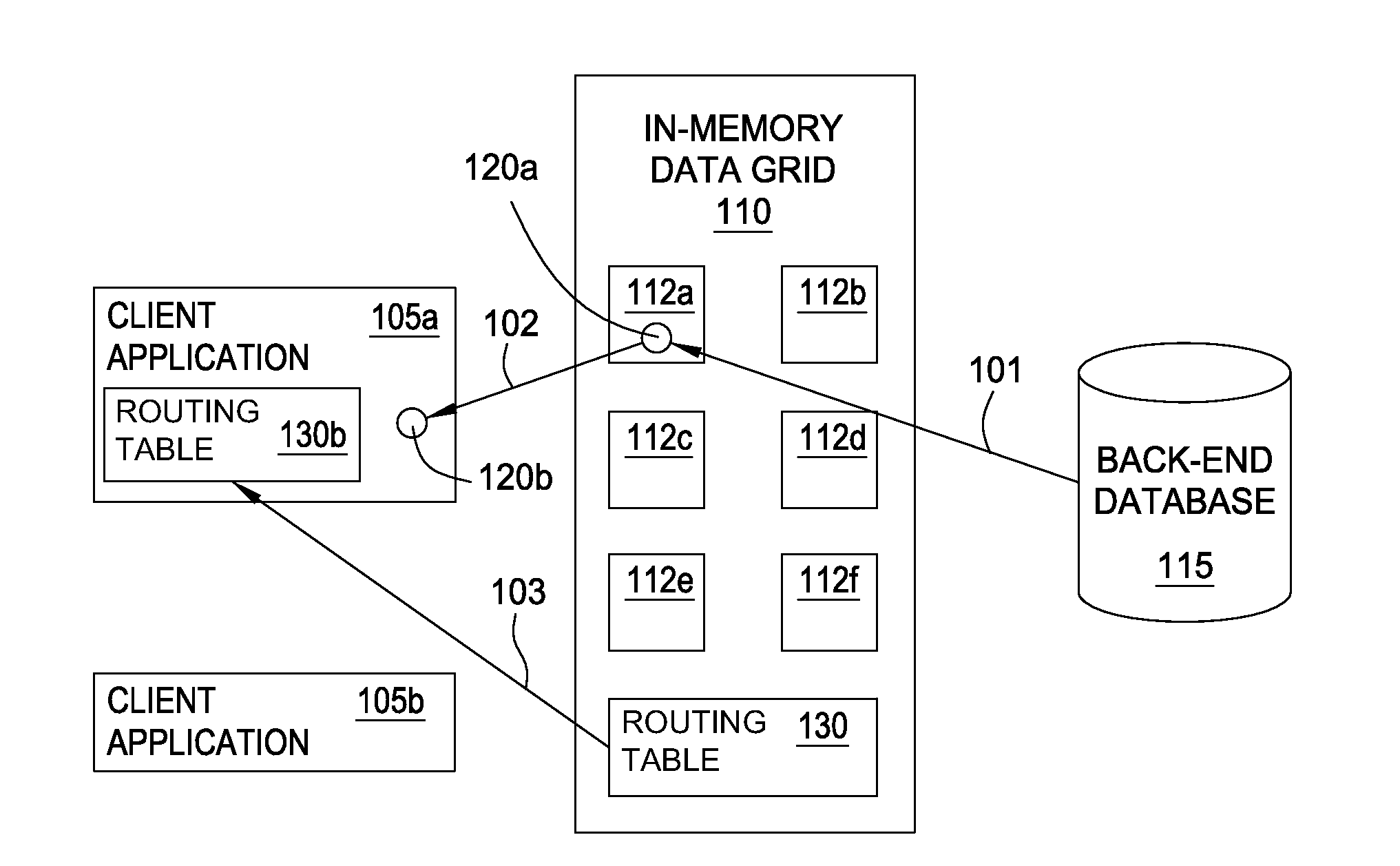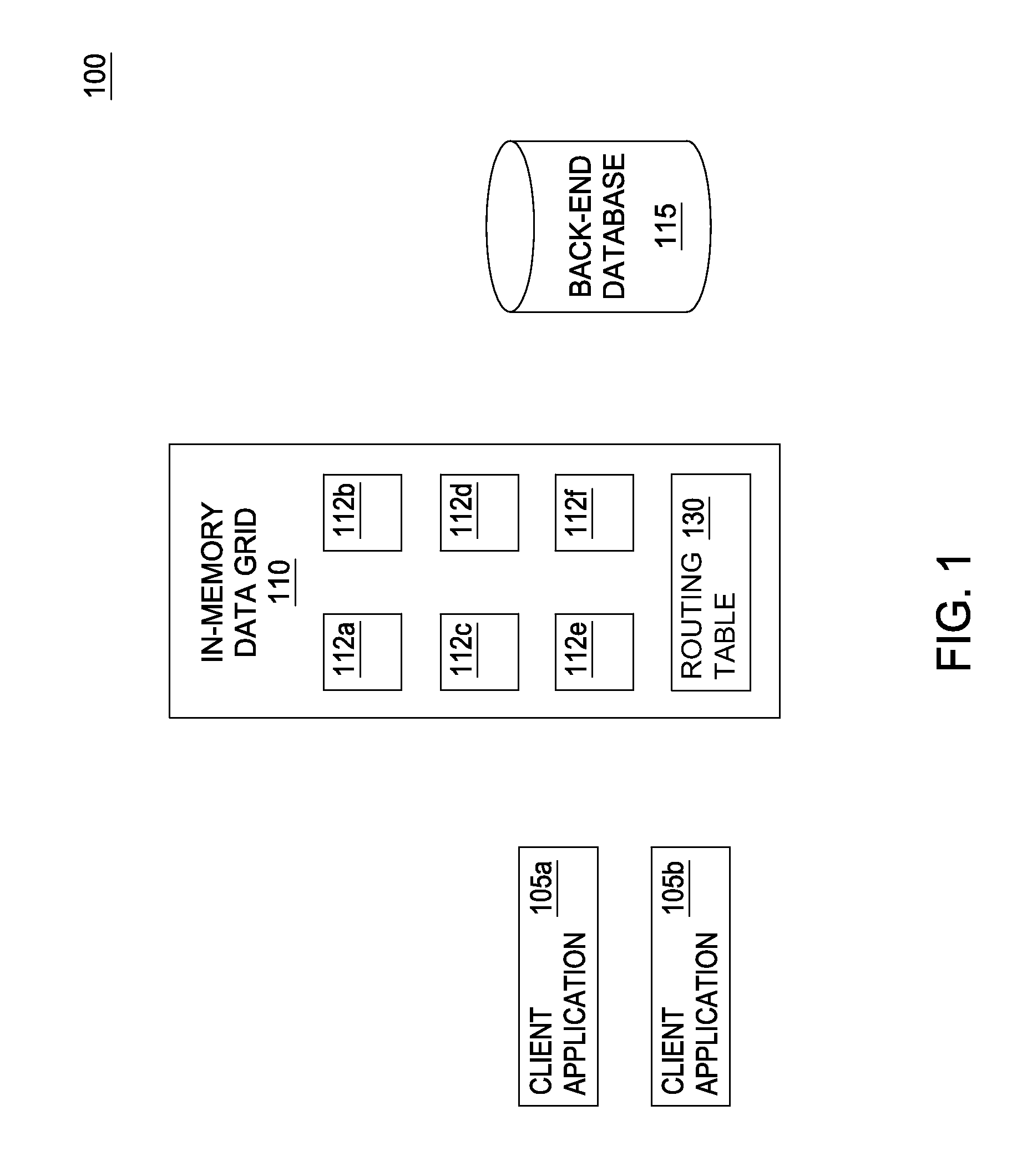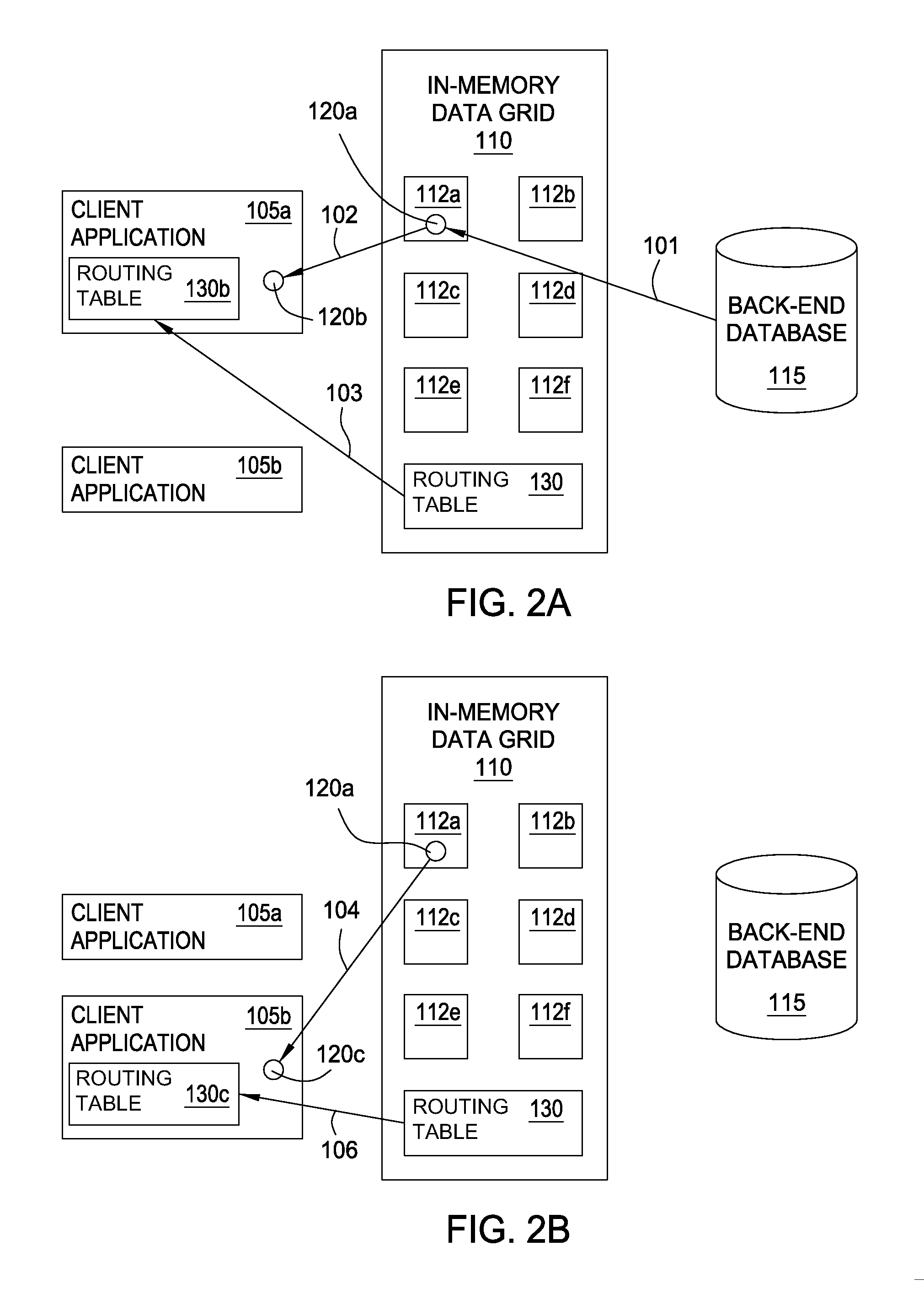Proximity grids for an in-memory data grid
a technology of in-memory data and proximity grids, applied in the field of data management, can solve the problems that individual requests may take a substantial amount of time and resources to execu
- Summary
- Abstract
- Description
- Claims
- Application Information
AI Technical Summary
Problems solved by technology
Method used
Image
Examples
Embodiment Construction
[0017]An in-memory data grid stores data (e.g., objects) in memory rather than on storage devices such as disk drives. Moreover, the in-memory data grid divides the stored data into multiple partitions or containers that may be located on multiple computer resources. Doing so permits an in-memory data grid to scale efficiently when its workload increases. Because of the high scalability of an in-memory data grid, extensions of the in-memory data grid (i.e., a proximity grid) may be created to serve queries received from defined geographic regions. For example, the in-memory data grid may monitor its workload and determine that queries originating from a certain region of a country are using the majority of the resources available to the in-memory data grid. Accordingly, the in-memory data grid may use computer resources found in, or near, that region to generate a proximity grid. A grid management system for the in-memory data grid may then populate the proximity grid with data that...
PUM
 Login to View More
Login to View More Abstract
Description
Claims
Application Information
 Login to View More
Login to View More - R&D
- Intellectual Property
- Life Sciences
- Materials
- Tech Scout
- Unparalleled Data Quality
- Higher Quality Content
- 60% Fewer Hallucinations
Browse by: Latest US Patents, China's latest patents, Technical Efficacy Thesaurus, Application Domain, Technology Topic, Popular Technical Reports.
© 2025 PatSnap. All rights reserved.Legal|Privacy policy|Modern Slavery Act Transparency Statement|Sitemap|About US| Contact US: help@patsnap.com



